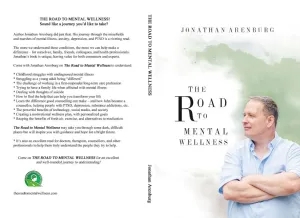From Burnout to Balance: A Guide to Managing Stress – “Feeling stressed out and burnt out? Check out this helpful guide on managing stress and finding balance in your life! From self-care tips to time management strategies, this article has everything you need to prioritize your well-being. Don’t let stress control your life – take charge and find your balance today!
Follow us
Stress is a common experience that affects many people in their daily lives. However, when stress becomes chronic and overwhelming, it can lead to burnout, a state of emotional, physical, and mental exhaustion that can negatively impact your work and personal life. If you are experiencing burnout, it’s important to take steps to manage your stress and find balance in your life. Here are some tips to help you manage stress and prevent burnout:
Need help? Go to Our Mental Health Resources Centre
- Recognize the signs of burnout. Burnout can manifest itself in many ways, including physical and emotional exhaustion, cynicism and detachment, and a reduced sense of accomplishment. If you’re experiencing these symptoms, it’s important to take a step back and assess your situation.
- Prioritize self-care. Taking care of yourself should be a top priority. Make time for activities that you enjoy, such as exercising, reading, or spending time with friends and family. Try to get enough sleep, eat a healthy diet, and take breaks throughout the day to recharge.
- Set boundaries. It’s important to set boundaries in your personal and professional life. Learn to say “no” to requests that are unreasonable or that you simply don’t have time for. Be clear about your needs and communicate them to others.
- Practice mindfulness. Mindfulness is a technique that can help you become more aware of your thoughts and feelings, and help you manage stress more effectively. Try taking a few minutes each day to meditate or practice deep breathing exercises.
- Find support. Whether it’s through friends, family, or a professional counselor, it’s important to have a support system in place. Talking to someone about your stress can help you feel more connected and less alone.
Learn more about burnout
- Prioritize tasks and delegate. One common source of stress is feeling overwhelmed by a long to-do list. Take a few moments to prioritize your tasks and determine which are most important. For tasks that can be delegated to others, consider asking for help or delegating to free up your time and reduce your stress.
- Practice time management. Time management can help you make the most of your time and reduce stress. Consider using tools like calendars and to-do lists to keep track of your tasks and schedule. Try to avoid overcommitting yourself and schedule in time for self-care and relaxation.
- Stay organized. A cluttered space can lead to a cluttered mind. Take some time to organize your workspace or living area to reduce distractions and increase your focus.
- Engage in hobbies or creative activities. Engaging in hobbies or creative activities can help you relax and unwind. Consider trying a new hobby or returning to an old one that you enjoy, such as painting, writing, or gardening.
- Connect with others. Building strong relationships with others can help you feel more connected and supported. Consider reaching out to old friends, joining a social club or group, or volunteering in your community.
Remember, everyone experiences stress at times. The key is to find strategies that work for you and make them a part of your daily routine. By prioritizing self-care, setting boundaries, and finding support, you can manage stress and achieve balance in your life.
My biggest mistake that lead to burnout
As you might imagine, working in a facility where those with severe mental illness and cognitive delay was stressful. Made even more so, mainly because those I helped for a living were also some of the most violent in the long-term care system.
And being a volunteer firefighter on top of that? Well, let’s say that my world was a very mentally draining place. Sadly, being under constant threat from the two occupations, they altered the course of my life forever.
My failure? I followed none of these recommendations here in this post. More than that though, I never gave any thought to the life I was living. I only thought, “This is the way life is, therefore, the way you are feeling must be normal.” Boy… was I ever wrong. And I paid dearly for that.
It wasn’t until my irritability got so bad and my eyes literally never stopped twitching that I finally conceded that I may have been taking on more than what is possible.
But by then, it was too late. The ball had been dropped and therefore I had to hit the bottom before I could start the climb back to wellness. It was only then I learned that I had to reinvent my world in order to live it.
And while I now struggle with major depressive disorder (MDD) , generalized anxiety disorder, and post-traumatic stress disorder, I am doing the above recommendations to manage my mental health disorders.
Stop by my podcast #thewellnesstalks and give me a follow
Moral of the story, no matter where you end up in life, stressed, mentally ill or otherwise, you can improve your journey. After all, its about maximizing your joy, not merely slugging through the mud.
Learn to Manage and Thrive
- His lifelong battle with depression
- The benefits of exercise
- How to start to overcome the dread and exhaustion of depression
- How small steps make huge differences
- Scientifically backed techniques to help minimize depression, anxiety, and PTSD’s effects
- How to set boundaries with yourself when you have a mental health condition·
- How to optimize living your life with these debilitating mental illnesses.

- The World Health Organization’s (WHO) page on burnout: https://www.who.int/mental_health/evidence/burn-out/en/ This page provides an overview of burnout, its symptoms, causes, and effects, as well as strategies for prevention and management. It also includes a section on burnout in the workplace and what employers can do to support their employees.
- https://www.apa.org/topics/burnout This page provides a definition of burnout, its symptoms, and risk factors, as well as strategies for prevention and management. It also includes resources for finding a therapist or seeking help.
3. Mayo Clinic’s page on burnout: https://www.mayoclinic.org/healthy-lifestyle/adult-health/in-depth/burnout/art-20046642 This page provides an overview of burnout, its symptoms, causes, and effects, as









Please leave a comment and tell us what you liked about what you read.